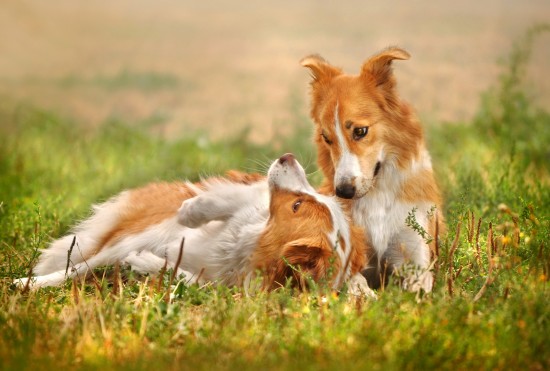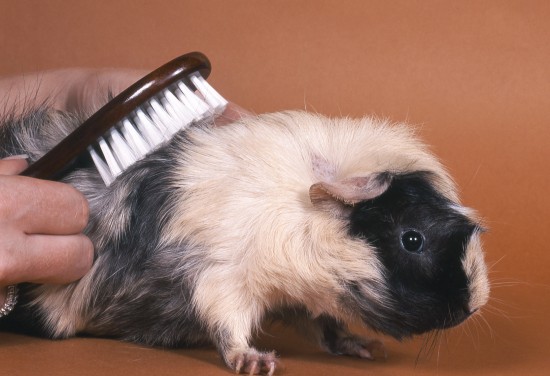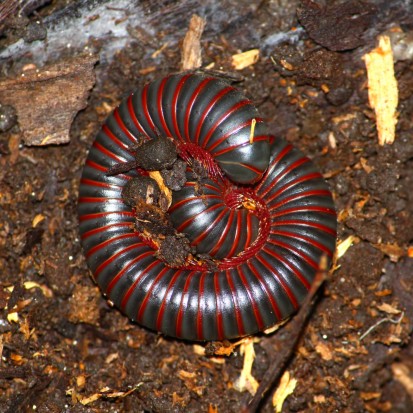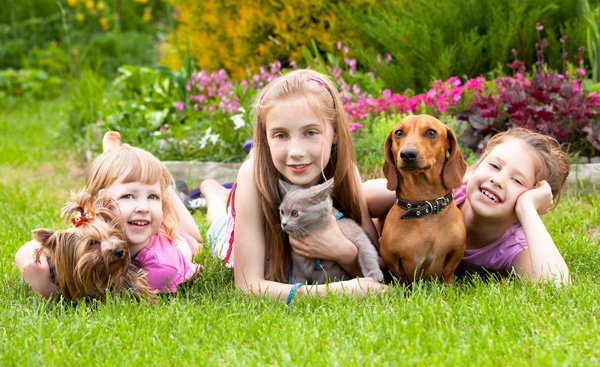
Introduction to Ageing: Dogs, like humans, are living longer than ever before. In the wild, dogs would have died young, as soon as they were no longer able to find their own food and defend themselves against predators. As our companions, they are living to a great age. Mental and physical changes occur slowly over this time.
In this article, I am going to outline some of the major physiological changes that occur, some ways in which we as caregivers can help them, some of the illnesses that affect older age groups, and some therapies that may be helpful.
Physiological Changes in Ageing: The nervous system: Messages travel down the nerve fibres of a dog in its prime at 6,000m per second. In older dogs these slow down to 1,300m per second.
The lungs: The lung tissue loses its elasticity with age, reducing the efficiency of respiration.
The circulatory system: The blood vessels lose their elasticity, making small haemorrhages more common e.g. in the brain tissue.
The brain: The consequent lack of oxygen to the brain reduces memory and learning. It can also affect personality and irritability.
Signs of Ageing: Loss of brain function is normal in most dogs by the age of 16. They may show signs of disorientation, changes in social relationships, changes to their diurnal rhythm, and incontinence. By the age of 16, 20% of dogs pass urine or faeces in the house, 25% of dogs sleep less at night and more in the daytime, and 60% interact less with their human companions (although they may go through a phase of increased attachment). More than 70% are disorientated, getting stuck in corners, going to the wrong side of the door when asking to go out, barking for no reason, and gazing into space. Neutered males get less aggressive with age, but neutered females tend to get more so.
Hormonal control and Ageing: Elderly dogs tend to secrete more stress hormones, even when relaxed. Training them to be more relaxed can help give them more control in later life. There is also a general reduction in brain neuroendocrine chemicals, especially dopamine.
How we can help with Ageing Dogs: We can help slow down ageing by gentle mental and physical stimulation. Massage loosens up stiff joints, improves circulation, and induces relaxation. Mental stimulation can increase the number of connections between neurons in the brain.
Feeding a diet high in antioxidants and vitamins can help. An older dog needs about 20% fewer calories, and some dogs gain weight with maturity. As always, any change in diet should be made gradually.
We as care-givers need to accept that our dog is ageing.
Over-exercising does more harm than good, so we need to allow the dog to set the pace. It is best to keep to usual routines, as change causes confusion. Dogs should be groomed more often as the skin glands will be producing less oil. Consider brushing its teeth daily, and provide more frequent toilet breaks.
Complementary Therapies and Ageing: Acupuncture can be particularly helpful with the pain of arthritis etc. Like acupressure and shiatsu, it also reduces pain by relaxing muscles.
T Touch therapy is a touch therapy that can be learned by the care-giver, and can be very calming in anxiety as well as helping many stress -related problems - which, as we now know, can give any symptom.
Chiropractic and osteopathy can both help, particularly with musculoskeletal problems, and massage has already been discussed. All these touch therapies are beneficial mainly in animals that enjoy touch, and can increase stress in those that do not.
Nutritional therapies involve altering the diet slightly to benefit the dog. The role of diet in helping ageing has already been discussed. It is notable however that when a dog declines to eat, for example during an infection, it does so for good reason, (such as to starve the invading organism, and concentrate energy on the immune system rather than digestion,) and should not be forced. Overfeeding is the commonest nutritional illness in dogs, and we need to guard against this and do our best to help educate caregivers when this is a problem. However, beware that any strict, unbalanced diet given over a prolonged period of time may lead to malnutrition.
Herbal remedies can help with specific ill health. For example, comfrey helps with sprains, marigold with digestive disorders, garlic for upper respiratory infections and digestive problems, and echinacea stimulates the immune system.
Aromatics are best self-selected, choosing those to offer based on any symptoms the dog may have. Homeopathy and other vibrational medicines likewise would be targeted at symptoms.
The beauty of spiritual healing and Reiki is that the dog will take whatever healing energy is needed, without a specific diagnosis being made. It is absorbed into whatever parts of the body, mind and spirit require it, stimulating its immune system and other natural means of self-healing. It can help with physical, emotional and psychological conditions. As the dog nears the end of its life, healing can help both the dog and its caregivers to come to terms with this, which helps with the process of passing over and with bereavement. Healing can be supplemented with use of crystals such as amber and carnelian.
Summary: In this article I have discussed the physiological causes for the signs of ageing that we see, the symptoms & signs experienced, and ways in which we can help, particularly touching on complementary therapies.
Alison Grimston is a holistic doctor and animal healer specializing in connecting and informing animal therapists. Her natural animal therapy website informs the public about animal therapies while connecting animal therapists worldwide. http://www.TheNaturallyHealthyPet.com
 Allergy Shampoos For Dogs - Ingredients To Avoid
Allergy Shampoos
Allergy Shampoos For Dogs - Ingredients To Avoid
Allergy Shampoos
 Dogs And Their Eye Contact With Each Other, And What This Means
Dogs And Their Ey
Dogs And Their Eye Contact With Each Other, And What This Means
Dogs And Their Ey
 Top Grooming Tips For Guinea Pigs
Top Grooming Tips
Top Grooming Tips For Guinea Pigs
Top Grooming Tips
 An Introduction To Giant Millipedes
An Introduction T
An Introduction To Giant Millipedes
An Introduction T
 Tips and Tricks for You to Keep Your Rabbit Hutches Clean and Tidy
Tips and Tricks for You to Keep Your Rabbit Hutches Clean
Tips and Tricks for You to Keep Your Rabbit Hutches Clean and Tidy
Tips and Tricks for You to Keep Your Rabbit Hutches Clean
Copyright © 2005-2016 Pet Information All Rights Reserved
Contact us: www162date@outlook.com